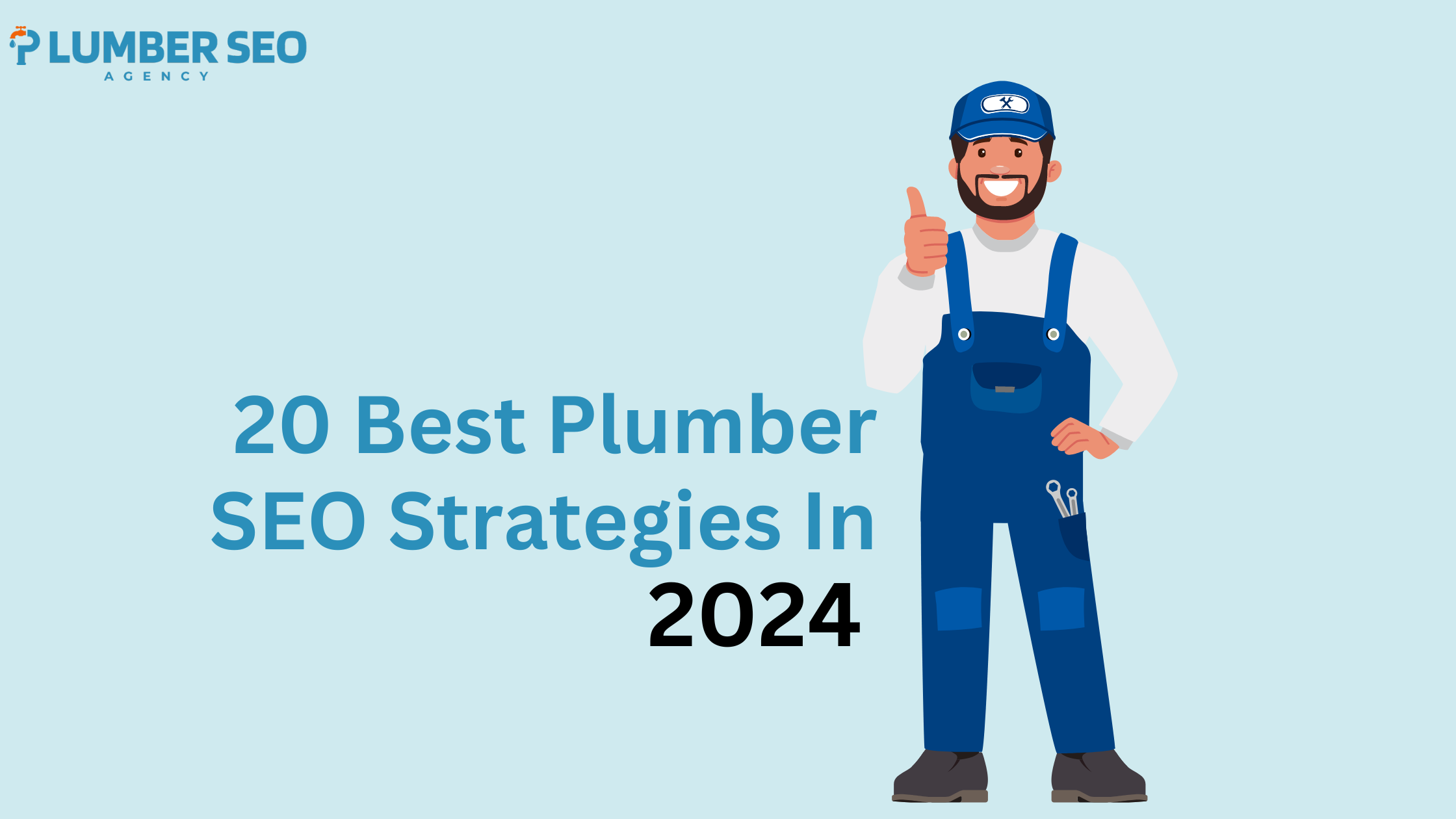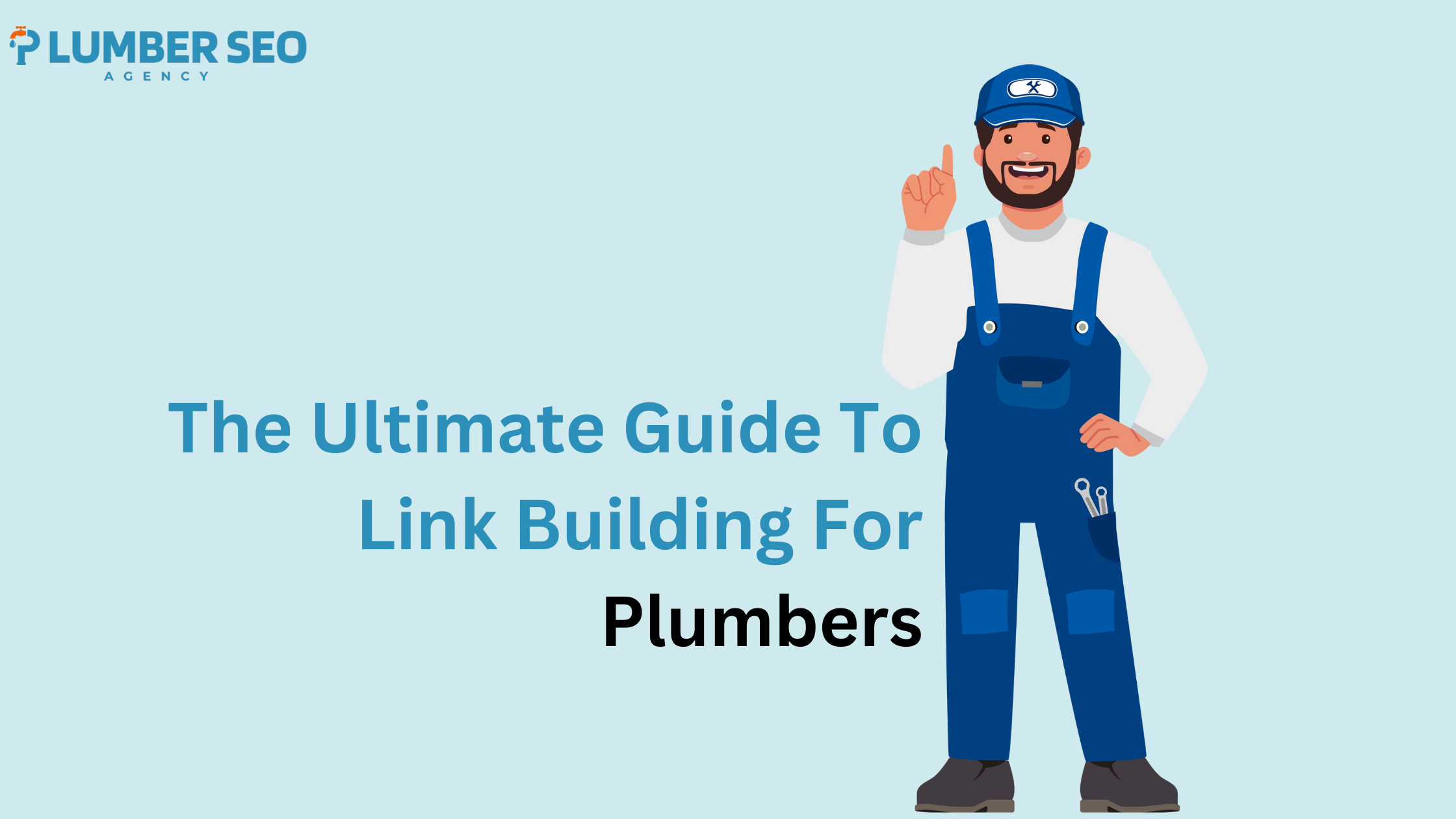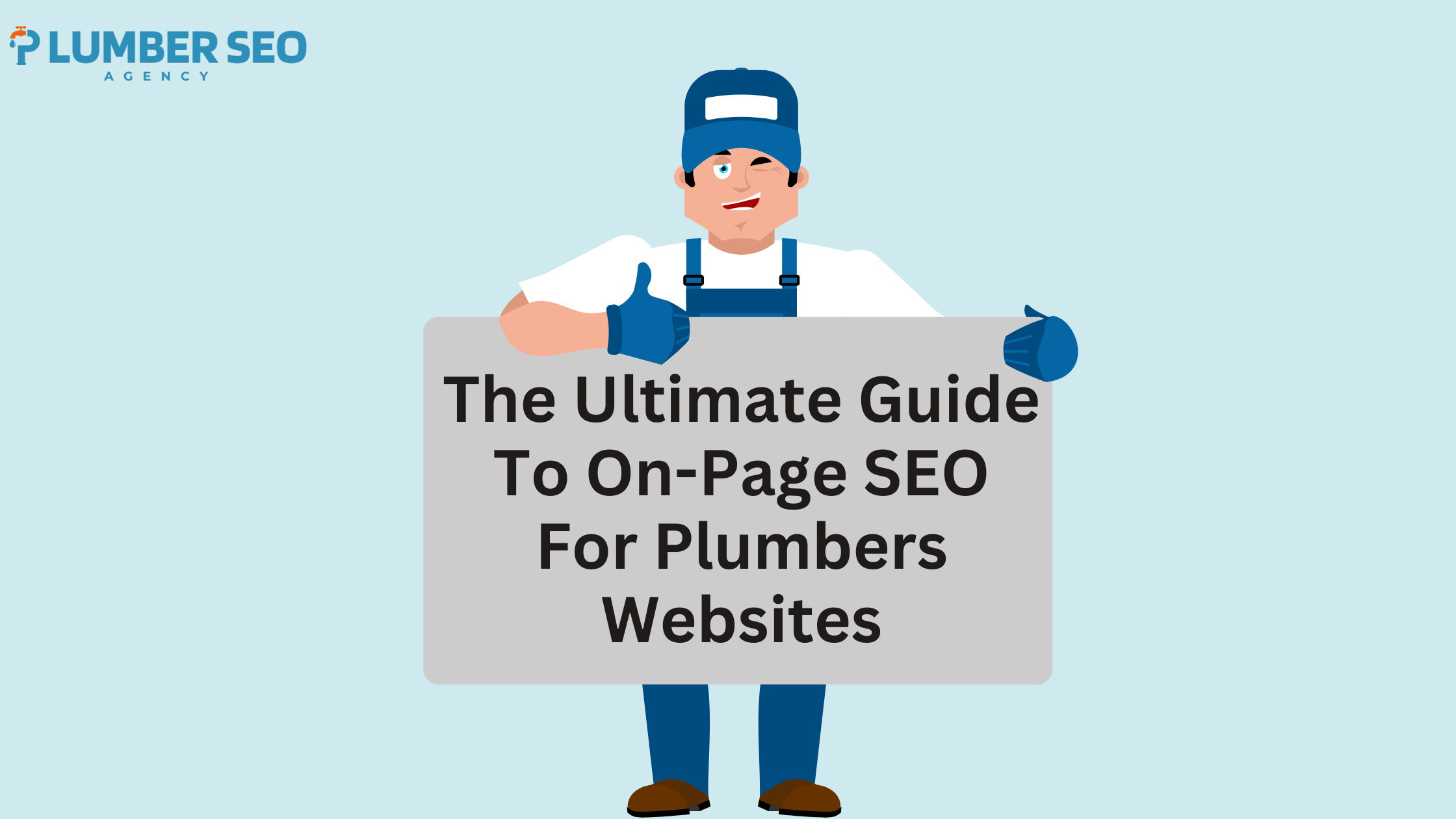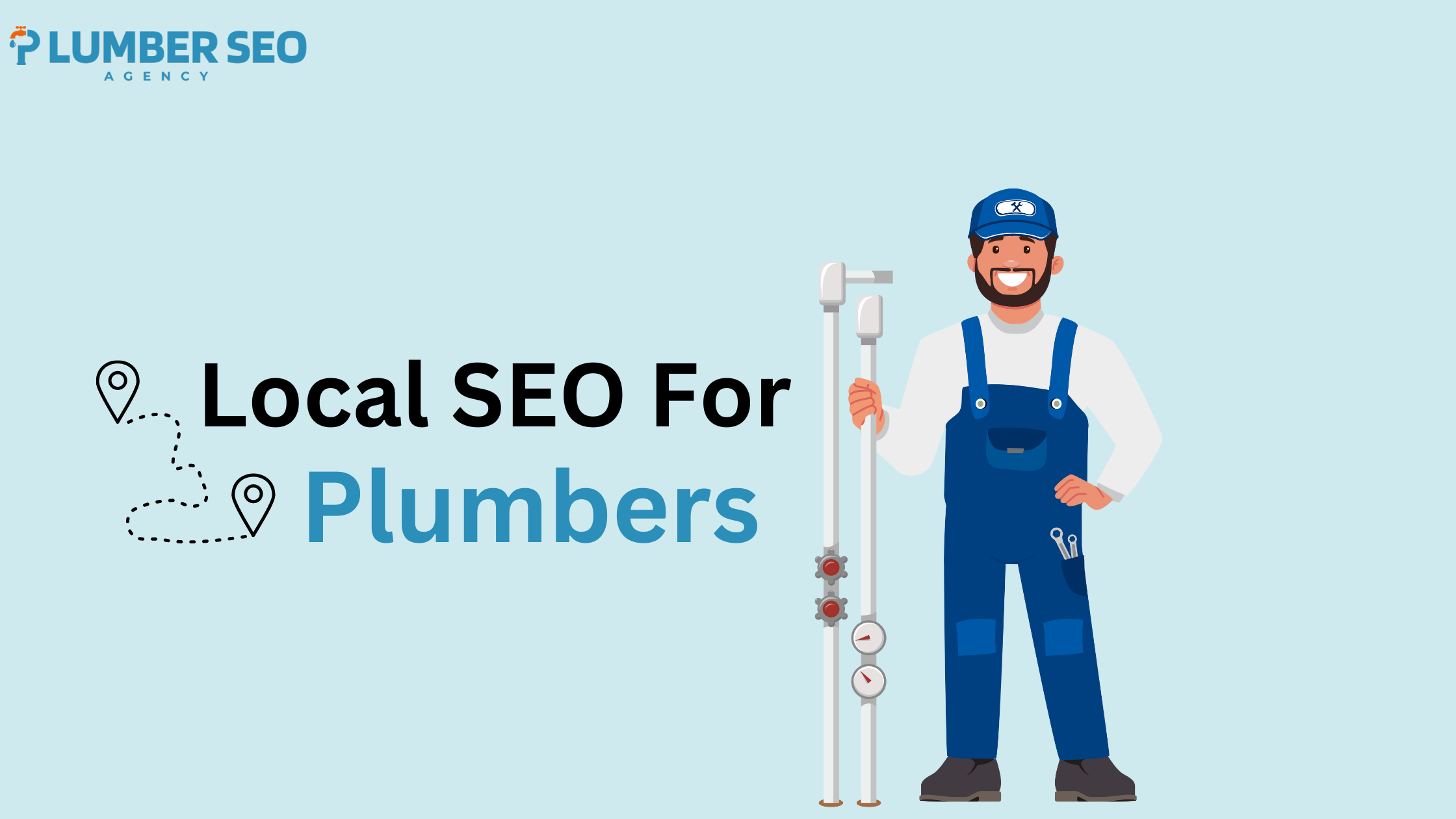In the vast world of the internet, where every click matters and every word has significance, plumbers face a unique challenge in getting noticed. In 2024, the competition for attention online has reached new heights, making it crucial for plumbing businesses to make the most of SEO strategies to stand out amidst the noise.
Imagine this scenario: a homeowner urgently needs a plumbing fix, so they quickly search “emergency plumber near me” online. At this critical moment, the visibility of your plumbing business could make all the difference between gaining a new customer and losing them to a competitor.
But fear not, fellow plumbers! In this guide, we’ll delve into the realm of Plumber SEO and unveil the 20 top-notch strategies customized specifically for plumbing businesses in 2024. From mastering local SEO techniques to fine-tuning for voice search compatibility and beyond, we’ll equip you with the essential tools and expertise necessary to elevate your online visibility and draw in a consistent stream of customers.
Whether you’re an experienced plumbing pro looking to refresh your digital strategy or a newcomer eager to make an impact online, get ready as we uncover the secrets to Plumber SEO success in 2024. Prepare to clear those digital pathways and emerge as a beacon of expertise in the ever-changing landscape of online plumbing services.
- Optimize Your Website For Local Search
- Track Your Competitors
- Optimize Your Website’s On-Page Elements
- Establish E-E-A-T
- Perform Keyword Research
- Find And Fix Keyword Cannibalization Issues
- Create High-Quality And Relevant Content
- Remove or Repurpose Underperforming Content
- Leverage Strategic Internal Linking
- FAQ Pages
- Build Out Topic Clusters
- Build High-Quality Backlinks
- Utilize Social Media Platforms
- Optimize Your Website’s Loading Speed
- Implement Schema Markup
- Core Web Vitals
- Monitor Your Website’s Performance
- Track Keyword Rankings
- Start A/B Testing
- Increase Your Dwell Time
What Is SEO For Plumber?
SEO (Search Engine Optimization) for plumbers involves implementing strategies to enhance online visibility and increase organic traffic to their websites. This process includes optimizing website content with relevant keywords related to plumbing services, such as “emergency plumber,” “pipe repair,” or “water heater installation,” to improve search engine rankings.
Additionally, creating localized content and utilizing local keywords can help attract customers in specific service areas. Building backlinks from reputable websites, such as industry directories or local business listings, can also boost a plumber’s online credibility and visibility.
Furthermore, ensuring website technical aspects such as mobile-friendliness, fast loading speeds, and secure connections can improve user experience and contribute to higher search rankings, especially when implementing SEO for plumber websites. Regularly updating and maintaining online business listings, particularly on platforms like Google My Business, is crucial for local SEO success, as it helps potential customers find accurate information about services, operating hours, and contact details, thereby enhancing the visibility of plumber businesses.
Overall, an effective SEO strategy tailored to the plumbing industry can help plumbers connect with more potential customers and grow their businesses online.
Also Read: Local SEO For Plumbers: A Comprehensive Guide To Transform Your Business
20 Best Plumber SEO Strategies In 2024
In today’s world, most people look for businesses online. If you run a plumbing business, it’s important to have a good SEO strategy to attract customers. Here are 20 simple tips to help your plumbing service show up at the top of search results and get more clients in 2024.
1. Optimize Your Website For Local Search

Here’s a breakdown of important Plumber SEO strategies for optimizing your plumbing company’s website for local searches:
Keyword Research And Targeting:
- Begin by identifying relevant keywords that people in your service area commonly used to find plumbers. Tools like Google Keyword Planner can assist in discovering search volume and competition levels for various keywords. Target a mix of broad terms (e.g., “plumber”) and specific long-tail keywords (e.g., “emergency leak repair near [your city]”).
On-Page Optimization:
- Content: Develop high-quality content that addresses common plumbing issues, provides DIY tips (with a reminder to contact a professional for complex problems), and demonstrates your expertise. Optimize your content by strategically incorporating relevant keywords in the text, headers (H1, H2, etc.), and image alt tags.
- Meta Tags and Descriptions: Create compelling meta descriptions that accurately represent your services and targeted location. Include your service area and a call to action in your descriptions.
- URL Structure: Utilize clear and concise URLs that integrate your target keywords. For instance, instead of a generic URL like “about-us.html,” use “emergency-plumbing-[your city].html”.
Technical SEO:
- Mobile-friendliness: Ensure your website is mobile-responsive and offers a smooth user experience for visitors on smartphones and tablets, as a significant portion of local searches occur on mobile devices.
- Website Speed: Optimize your website for fast loading times. Slow loading times can significantly impact your search ranking and deter potential customers.
Local SEO Optimization:
- Google Business Profile: Claim and optimize your Google Business Profile (formerly Google My Business). Complete all information accurately, including your address, phone number, service area, and business hours. Encourage satisfied customers to leave positive reviews on your profile.
- Citations: Get listed in relevant online directories within the plumbing industry and your local area. Ensure consistency in your NAP (Name, Address, Phone number) details across all listings.
2. Track Your Competitors
Monitoring your competitors remains vital for a thriving SEO strategy, even within the plumbing industry. Understanding the landscape and trends in SEO for plumbers can offer valuable insights into improving your own digital presence. By staying attuned to what competitors are doing in terms of search engine optimization, you can identify opportunities, adapt your approach, and refine your strategies to enhance your online visibility. Here’s a guide on how to track your competitors to enhance your plumbing SEO efforts:
Analyze Their Online Presence:
- Websites: Visit their websites to observe their targeted keywords in content, meta descriptions, and titles. Assess their site structure, mobile-friendliness, and loading speed.
- Content: Analyze the types of content they offer, such as blog posts, service pages, and customer testimonials. Identify topics they cover and pinpoint content gaps.
- Citations: Utilize tools like SEMrush or Ahrefs to identify where competitors are cited and aim to get listed in those directories.
- Social Media: Monitor their activity on various platforms and gauge engagement levels.
Utilize Their Insights To Enhance Your Strategy:
- Target Similar Keywords: Identify relevant keywords your competitors rank for and incorporate them into your strategy without copying directly.
- Produce High-Quality Content: Elevate your content by providing informative, engaging material optimized for your target keywords.
- Generate More Reviews: Encourage satisfied customers to leave positive reviews on platforms like Google My Business, as they significantly impact local SEO rankings.
- Develop a Strong Backlink Profile: Seek out quality backlinks from relevant plumbing industry websites or local news outlets to bolster your website’s authority.
SEO Tools For Competitive Analysis:
- SEMrush
- Ahrefs
- Moz
- SpyFu
3. Optimize Your Website’s On-Page Elements

Certainly! Optimizing your website’s on-page elements is essential for any plumber’s SEO strategy. Let’s break down the key areas to focus on:
Keyword Research And Optimization:
- Begin by conducting comprehensive keyword research to pinpoint terms associated with your plumbing services and location, including a blend of broad terms like “plumber” and more specific ones such as “kitchen sink clog repair near me.” Leverage keyword research tools to assess search volume and competition accurately. Additionally, ensure your website content reflects the expertise you offer, including specialized services like Plumber On-Page SEO services, to attract relevant traffic and enhance your online visibility.
Meta Tags And Descriptions:
- Craft engaging meta descriptions that incorporate your target keywords. These descriptions appear in search results and should encourage users to click through to your site. Keep them concise and informative, typically around 155 characters.
Header Tags (H1, H2, H3):
- Organize your content with clear headings using H tags. Naturally, integrate your target keywords into these headers. This not only enhances readability for users but also helps search engines comprehend your content hierarchy.
URL Optimization:
- Move away from generic URLs. Instead, opt for descriptive URLs that include your target keywords and accurately represent the page’s content. Ensure they are user-friendly and avoid unnecessary length.
Internal Linking Structure:
- Establish a robust internal linking structure to interconnect relevant pages across your website. This aids search engines in understanding the content flow and enhances website navigation for users.
Also Read: 18 Common SEO Mistakes To Avoid In Plumbing Businesses
4. Establish E-E-A-T
Certainly! Establishing Expertise, Experience, Authoritativeness, and Trustworthiness (E-A-T) is crucial for effective SEO in the plumbing industry. Here’s how you can achieve this:
Content Creation:
- Targeted Local Service Pages: Develop dedicated web pages for each service you offer. Clearly explain the problem addressed by the service, target relevant keywords, and specify your service area.
- Blogging for Expertise: Regularly publish informative blog posts showcasing your plumbing knowledge. Address common issues, offer DIY tips (with a note to consult professionals for complex tasks), and simplify plumbing processes for readers.
- About Us Page for Experience and Trust: Create a compelling “About Us” page highlighting your team’s experience, certifications, and accolades. Share your journey as a plumber, emphasizing challenges overcome to foster trust with potential clients.
Building Trust And Authority:
- Positive Reviews: Solicit and showcase positive reviews from satisfied customers on Google, social media, and other review platforms. Respond to all reviews professionally, expressing gratitude for positive feedback and addressing concerns from negative ones.
- Community Engagement: Engage with your local community by sponsoring events, volunteering for plumbing-related causes, or participating in community activities. This demonstrates your commitment to the area and enhances trust with residents.
5. Perform Keyword Research

Keyword research is essential for a successful plumber SEO strategy. Here’s how you can approach it:
Define Your Target Audience
- Understand the common plumbing issues in your service area and the needs of your potential customers.
- Identify the phrases they are likely to use when searching for plumbing services online.
Use Keyword Research Tools
- Take advantage of tools like Google Keyword Planner (free), SEMrush (paid), and Ahrefs (paid) to discover relevant plumbing keywords.
- These tools provide insights into search volume, competition, and related keywords.
Keywords Metrics
- Long-tail keywords, such as “emergency leak repair near [your location],” are specific and less competitive.
- Targeting long-tail keywords can lead to higher conversion rates due to clearer search intent.
- Look for keywords with decent search volume but relatively low competition.
- As your SEO efforts progress, you can aim for high-volume keywords with more competition.
- Incorporate your chosen keywords naturally into various aspects of your website’s content.
- Optimize page titles, meta descriptions, headings, body text, and image alt text with relevant keywords while ensuring readability.
6. Find And Fix Keyword Cannibalization Issues
Keyword cannibalization occurs when multiple pages on your website vie for the same keywords with search engines, leading to confusion for search algorithms and potentially damaging your overall ranking for those keywords.
Identifying Cannibalized Keywords:
- Utilize SEO Tools
- Google Search Console
- Analyze Site Search
Fixing Keyword Cannibalization:
- Content Consolidation: Merge pages targeting similar keywords into a single, comprehensive resource. This strengthens content and eliminates confusion for search engines.
- Optimize Pages: Tailor each page to address its specific keyword variation and intent. Ensure content is relevant and include internal links to related pages.
- Implement 301 Redirects: Redirect weaker pages targeting valuable keywords to stronger, more relevant pages using 301 redirects. These transfers link authority and user traffic effectively.
- Cannibalization: Use rel=”canonical” tags for pages with very similar content to specify the preferred version to search engines, preventing confusion and ensuring indexing of the most relevant page.
Preventing Future Issues:
- Keyword Research: Conduct thorough keyword research before content creation. Utilize tools like Google Keyword Planner to identify relevant keywords with adequate search volume and strategically target them in your content.
- Content Strategy: Develop a clear content strategy outlining the purpose and target audience for each page. This helps prevent unintentional creation of competing pages targeting the same keywords.
7. Create High-Quality And Relevant Content

Creating high-quality and relevant content plays a significant role in SEO strategies for plumbing businesses. Let’s delve into how content creation can enhance your online presence:
To establish credibility as a reliable plumbing service provider, consider implementing several strategies. First, develop an informative blog on your website, offering DIY solutions for common plumbing issues and providing preventative maintenance tips.
To enhance your online presence, it’s crucial to tailor your content to cater to local audiences searching for plumbing services in your area. One effective strategy is to create engaging content like infographics and video tutorials. By optimizing for search engines, incorporating relevant keywords naturally, and ensuring mobile-friendliness, you can boost your visibility. Craft compelling meta descriptions and titles to attract users, and create shareable content to encourage social media sharing and backlink generation. This comprehensive approach can significantly improve your SEO efforts for Plumber Content Marketing services.
8. Remove or Repurpose Underperforming Content
Identifying Underperforming Content
- Analytics: Utilize Google Search Console to pinpoint plumbing-related pages on your website with low traffic and engagement metrics such as clicks, impressions, and time spent on page.
- Search Ranking: Identify content that previously ranked well for relevant keywords but has since experienced a decline in search positions.
Assessing Repurposing Versus Removal
- Potential: Assess whether the content can benefit from updates such as refreshed information, additional content, or targeting new keywords.
- Relevance: Determine if the content has become outdated or no longer aligns with your services or target audience, in which case removal might be more appropriate.
Strategies For Repurposing
- Content Updates: Revise outdated information, incorporate new insights, and optimize for relevant keywords.
- Content Consolidation: Merge thin content pages into a more comprehensive and informative article.
- Format Transformation: Transform text content into infographics, videos, or other engaging formats.
Content Removal
- 301 Redirects: When removing a page, establish a 301 redirect to direct users and preserve search engine link equity to a relevant page on your website.
- Monitoring Search Console: Keep a close watch on Google Search Console to detect any crawl errors or indexing issues stemming from content removal.
9. Leverage Strategic Internal Linking
Internal linking involves creating hyperlinks between different pages on your plumbing website. When users click on these links, they are directed to other relevant content within your site. This practice enhances user experience by facilitating easier navigation and access to desired information.
Strategic Internal Linking For Plumbers:
- Targeted Keywords: Utilize anchor text, the clickable text of a hyperlink, to incorporate relevant keywords. By integrating keywords into anchor text, such as linking a page about “drain cleaning” from a blog post titled “5 DIY Plumbing Fixes That Might Backfire,” you can reinforce the relevance of linked pages to search engines.
- Content Hierarchy: Establish a clear hierarchy of content by linking from broader service pages (e.g., “plumbing services”) to more specific ones (e.g., “toilet repair”). This approach aids search engines in understanding your website’s structure and the interconnections between different pages.
- User Intent: Take into account user intent when implementing internal links. For instance, if a visitor is reading a blog post on “leaky faucet repair,” consider linking them to a service page for faucet repair or a comprehensive guide on faucet replacement.
10. FAQ Pages

FAQ pages can be a valuable asset for plumbers aiming to enhance their SEO strategy. Here’s how they can be effective:
Targeted Keywords:
- Identify common plumbing issues and questions frequently searched by users. These serve as your target keywords.
- Incorporate these keywords naturally throughout your FAQ content, avoiding any forced usage.
User-Centric Content:
- Prioritize the creation of informative and helpful content that addresses user queries clearly and understandably.
- Cover common plumbing concerns such as leaky faucets, clogged drains, and water heater repair.
- Utilize plain language and steer clear of technical terms to ensure accessibility.
Structural Organization And Optimization:
- Arrange your FAQ page with well-defined headings and subheadings for seamless navigation.
- Include concise snippets or bullet points to facilitate quick comprehension.
- Optimize your title tag and meta description by incorporating relevant keywords.
11. Build Out Topic Clusters
A topic cluster comprises a collection of web pages centered around a core theme, such as plumbing services. This central theme is comprehensively covered in a pillar page, which serves as a hub, linking out to various sub-pages exploring specific aspects of the main topic.
Steps To Building Plumber Topic Clusters:
- Keyword Research: Identify main plumbing services and research relevant keywords with good search volume, including long-tail keywords targeting specific plumbing problems.
- Pillar Page Creation: Develop comprehensive pillar pages for each main service, like “Leak Detection” or “Drain Cleaning,” covering topics in detail.
- Spoke Page Creation: Create informative blog posts answering specific questions related to main services. For instance, under a “Leak Detection” pillar page, spokes could include “Signs of a Leak,” “Common Leak Locations,” and “DIY Leak Detection Tips.”
- Interlinking: Link pillar pages to relevant spokes and vice versa, creating a network of information showcasing expertise and helping search engines understand content connections.
12. Build High-Quality Backlinks
High-quality backlinks play a vital role in the SEO strategy for plumbers, significantly enhancing their online visibility. Here’s a breakdown of key points:
Why Do Backlinks Matter?
Search engines view backlinks as indicators of credibility and authority for your plumbing business’s website. When reputable and relevant sites link to your plumbing business’s site, it signals to search engines that your content is valuable. This can result in higher search rankings, especially for local searches. Investing in Plumber Link-Building Services can significantly enhance your website’s visibility and credibility, ultimately driving more traffic and potential customers to your business.
Building High-Quality Backlinks
- Prioritize Relevance: Aim for backlinks from sites related to the plumbing industry or your local area. For example, a link from a local home renovation site carries more weight than one from an unrelated blog.
- Quality, Trump’s Quantity: A handful of high-authority backlinks hold more value than numerous links from low-quality sources. Concentrate on securing backlinks from established sites with strong reputations.
- Create Valuable Content: Informative, high-quality content naturally attracts backlinks. People are more inclined to link to your site if it offers valuable resources or insights on plumbing. This could include blog posts on DIY plumbing tips, informative articles on common plumbing issues, or well-crafted case studies showcasing your expertise.
Strategies for Earning Backlinks
- Guest Blogging:
- Community Engagement:
- Business Listings:
- Profile Creation
- Social bookmarking
- Web 2. O
- Social sharing
13. Utilize Social Media Platforms

Utilizing social media can significantly enhance plumbers’ SEO efforts and bolster their online presence. Here’s a comprehensive strategy:
Optimal Platform Selection:
- Facebook: As a powerhouse in social media, Facebook facilitates targeted local advertising and diverse content sharing, including blogs and promotions.
- Nextdoor: This platform focuses on hyper-local connections, enabling plumbers to directly engage with neighbors and foster community trust.
- Instagram: Visual content shines on Instagram, making it perfect for showcasing plumbing projects through high-quality photos and videos.
- YouTube: For informative and captivating video content, YouTube is unbeatable. Plumbers can create tutorials on DIY fixes, address common plumbing issues, and highlight the advantages of their services.
Social Media Promotion:
- Integrate links to your social media profiles across your website, email signatures, and invoices.
- Organize social media contests or giveaways to attract new followers.
- Encourage customer feedback and reviews on your social media platforms.
14. Optimize Your Website’s Loading Speed
Loading speed is a critical factor for SEO, especially for plumbing businesses. Here’s why it’s crucial and how to optimize it:
Optimizing Website Speed For Plumbers:
- Image Optimization: Images often contribute to slow loading times. Use tools to compress images while maintaining quality.
- Minify Code: Minimizing website code by removing unnecessary characters and spaces makes it lighter and faster to load.
- Caching: Utilize caching to store website elements locally in the user’s browser, reducing the need to download them repeatedly.
- Content Delivery Network (CDN): Consider using a CDN to distribute your website’s content across servers worldwide. This ensures faster loading times for users regardless of their location.
- Choose a Reliable Hosting Provider: Opt for a hosting provider with reliable infrastructure capable of handling website traffic efficiently.
15. Implement Schema Markup

Schema markup is a type of code that you can add to your website to help search engines better understand your plumbing business. In simple terms, it acts like labels for different parts of your website content. By implementing schema markup, you provide search engines with more information about your services, location, customer reviews, and more, which can significantly improve how your business appears in search results.
How To Implement Schema Markup For Your Plumbing Business:
- Research Schema Data Types: Explore Schema.org for a comprehensive list of schema types relevant to your plumbing business, including Local Business, Service Review, and specific service types like Plumbing Service.
- Gather Your Business Information: Compile details such as your business name, address, phone number, service areas, customer ratings (if applicable), and accepted payment methods.
- Generate Schema Markup Code: Utilize online tools like Google’s Structured Data Markup Helper tool within Search Console to generate the schema markup code for your website.
- Implement Schema Markup on Your Website: Depending on your website platform, implement the generated schema markup code. Some Content Management Systems (CMS) offer plugins to simplify this process. If needed, seek assistance from a web developer.
- Test and Monitor: After implementation, use Google’s Rich Results Test tool to verify if your schema markup is working correctly. Monitor your website’s traffic and ranking over time to assess the impact of schema markup on your SEO efforts.
16. Core Web Vitals
Crafting an effective plumber SEO strategy involves leveraging Core Web Vitals (CWV) to enhance user experience, thereby boosting search engine rankings. CWV, a set of metrics prioritized by Google, primarily focuses on loading speed, responsiveness, and visual stability.
Here’s How Integrating CWV Into Your Plumber SEO Strategy Can Be Beneficial:
Fast Loading Speed: In urgent plumbing situations, users demand swift access to solutions. A slow-loading website not only frustrates potential customers but also increases bounce rates, adversely affecting search rankings as Google favors faster-loading sites.
Mobile-Friendliness: With a significant portion of web searches occurring on mobile devices, ensuring your plumbing website is mobile-friendly is crucial. Failure to do so results in a poor user experience, negatively impacting search engine rankings.
Optimizing For Core Web Vitals:
- Utilize tools: like Google PageSpeed Insights to analyze your website’s performance and identify areas for improvement.
- Optimize Images: Large image files can significantly slow down loading times. Compress images without compromising quality to improve website speed.
- Minimize Code: Complex code can hinder site performance. Consider minifying HTML, CSS, and JavaScript files to streamline website speed.
- Reduce HTTP Requests: Each element on your website necessitates an HTTP request, contributing to loading delays. Minimize unnecessary elements to enhance speed.
- Enhance Server Response Time: The choice of web hosting provider influences website speed. Evaluate your hosting plan and consider upgrading if necessary to improve server response time.
By prioritizing Core Web Vitals in your plumber SEO strategy and implementing optimization techniques, you can enhance user experience, increase website visibility, and ultimately attract more customers to your plumbing business.
17. Monitor Your Website’s Performance

Monitoring your website’s performance is essential for any SEO strategy, including those tailored for plumbers. Tracking key metrics allows you to pinpoint areas for improvement and ensure that your website attracts potential customers. Here’s what you need to know:
Tools For Tracking Performance:
- Google Analytics: This free tool by Google offers extensive data on your website traffic, user behavior, and conversions.
- Google Search Console: Another free tool from Google, Search Console provides insights into how search engines perceive your website.
Key Metrics To Monitor:
- Organic Traffic: This metric tracks the number of visitors who arrive at your website from search engines. An increase in organic traffic indicates the effectiveness of your SEO efforts.
- Keyword Rankings: Monitor your ranking for important keywords related to your plumbing services. Strive to improve your ranking over time to increase visibility in search results.
- Bounce Rate: This metric measures the percentage of visitors who leave your website after viewing only one page. A high bounce rate could suggest that your site is irrelevant to their search query or difficult to navigate.
- Conversion Rate: This metric reflects the percentage of visitors who complete a desired action on your website, such as requesting a service call.
18. Track Keyword Rankings
Optimizing your plumbing business website for search engines (SEO) is essential for attracting more local clients. Here’s a breakdown of key strategies to consider, including tracking your keyword rankings:
- Utilize Free and Paid Tools: Take advantage of free tools such as Google Search Console to monitor your website’s organic traffic and keyword rankings. Paid SEO tools like Ahrefs or SEMrush offer more comprehensive keyword tracking features.
- Regular Monitoring: Make it a habit to track your keyword rankings regularly. This allows you to assess the effectiveness of your SEO efforts. Analyze which keywords you’re ranking for and how your positions change over time. By doing so, you can identify what strategies are working well and what adjustments may be necessary.
19. Start A/B Testing

Optimizing your plumbing business’s SEO strategy with A/B testing is a smart approach. Here’s how you can leverage this method:
SEO Strategies For Plumbers:
- Keyword Research & Content Optimization: Identify relevant keywords that potential customers use to search for plumbers in your area. Think beyond just “plumber” and target specific services like “drain cleaning near me” or “24/7 emergency plumber [your city]”. Integrate these keywords naturally throughout your website content, including titles, meta descriptions, and service pages.
- Local SEO is Key: Since plumbing services are local, optimize your Google My Business (GMB) profile. Ensure your business information like address, phone number, and operating hours are accurate and consistent across the web.
- Website Optimization for User Experience: Make your website mobile-friendly and easy to navigate. People searching for a plumber often need help quickly, so ensure your contact information is prominent and a call-to-action button to schedule service is easily accessible.
A/B Testing SEO Elements:
- Headlines & Meta Descriptions: Test different headlines and meta descriptions for your service pages and landing pages. See which ones generate a higher click-through rate (CTR) in search results.
- Call to Action Buttons: Experiment with different button placements, text (“Schedule Now” vs. “Get a Free Quote”), and colors to see which ones get clicked more often.
- Content Formatting: Try out various content formats like bulleted lists, videos, or infographics alongside written content. See which format keeps users engaged on your website for longer.
20. Increase Your Dwell Time
Dwell time, the duration visitors spend on your website, significantly influences search engine rankings. Google values sites where visitors linger longer, perceiving them as more valuable and relevant. To enhance dwell time and engage potential customers on your plumbing website, consider implementing the following SEO strategies:
Compelling Content:
- Address Search Intent: Recognize diverse user needs within plumbing queries. Craft tailored content that precisely addresses specific problems, such as drain cleaning or water heater installation.
- Comprehensive Content Creation: Employ the “Skyscraper Technique” to develop comprehensive and informative content. Strive to create the ultimate resource on plumbing topics, serving as a go-to destination for relevant information.
- Diversify Content Formats: Break monotony by incorporating varied content formats like images, infographics, and videos. Appeal to different learning styles and preferences, ensuring engagement across diverse audiences.
Enhanced Usability:
- Prioritize Mobile Optimization: Optimize your website for seamless mobile experiences, considering the prevalent use of smartphones for plumber searches. Ensure swift loading times and intuitive navigation on mobile devices.
- Enhance Readability: Simplify language usage, employ concise paragraphs, and utilize bullet points to facilitate easy comprehension. Streamline content presentation to enable quick scanning and digestion of information.
- Foster Internal Linking: Strategically embed links to relevant pages within your website. Encourage visitors to explore additional services and information, thereby prolonging their engagement and dwell time.
Conclusion
In conclusion, implementing the 20 best plumber SEO strategies outlined in this guide can significantly enhance a plumbing business’s online visibility, attract more potential customers, and ultimately lead to business growth. These strategies cover essential tactics such as local search optimization, competitor analysis, schema markup implementation, and user experience prioritization, all geared towards optimizing SEO for plumbers. By staying informed about emerging trends and continually adapting their SEO efforts, plumbers can establish themselves as industry authorities and consistently attract new leads in the competitive digital landscape of plumbing services.
How long does it take to see results from SEO efforts?
SEO is a long-term strategy, and results can vary depending on various factors such as competition, website authority, and the effectiveness of your tactics. Generally, it can take several months to start seeing significant improvements in rankings and traffic.
What types of content should plumbers create for their websites?
Plumbers should create informative content such as blog posts, articles, and how-to guides covering common plumbing issues, maintenance tips, and DIY solutions to attract and engage potential customers.
How can plumbers build quality backlinks to their websites?
Plumbers can build quality backlinks to their websites by guest blogging on industry-related websites, participating in forums and online communities, and reaching out to influencers for collaborations and mentions.





